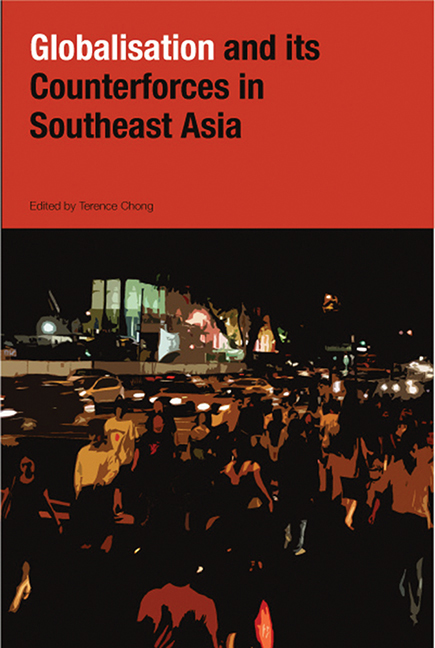Book contents
- Frontmatter
- Contents
- Foreword
- Preface
- The Contributors
- Introduction
- Part I The Political Contradictions of Globalization
- Part II Economic Regionalism and Global Influences
- Part III Local Security, Global Insecurity
- Part IV Social Processes: Arrested Development
- 12 Reluctant Tigers: Economic Growth, Erratic Democratization Processes and Continuing Political Gender Inequality in Southeast Asia
- 13 Women's Emancipation in the Philippines: A Legacy of Western Feminism?
- 14 Women's Emancipation in the Philippines: A Legacy of Western Feminism?
- Part V Cultural Production in the Global Matrix
- Index
13 - Women's Emancipation in the Philippines: A Legacy of Western Feminism?
from Part IV - Social Processes: Arrested Development
Published online by Cambridge University Press: 21 October 2015
- Frontmatter
- Contents
- Foreword
- Preface
- The Contributors
- Introduction
- Part I The Political Contradictions of Globalization
- Part II Economic Regionalism and Global Influences
- Part III Local Security, Global Insecurity
- Part IV Social Processes: Arrested Development
- 12 Reluctant Tigers: Economic Growth, Erratic Democratization Processes and Continuing Political Gender Inequality in Southeast Asia
- 13 Women's Emancipation in the Philippines: A Legacy of Western Feminism?
- 14 Women's Emancipation in the Philippines: A Legacy of Western Feminism?
- Part V Cultural Production in the Global Matrix
- Index
Summary
INTRODUCTION: GLOBALIZATION AND WOMEN'S EMANCIPATION
Globalization is often associated with Westernization or Americanization. Such an irresistible force, globalization is likened to a tidal wave that sweeps over the world, crushing local uniqueness and undermining national sovereignty. Ironically, even as globalization is linked with homogenization, it has involuntarily promoted the creation of resistance groups calling for the articulation of differences and particularities in the midst of the growing sameness. It is in this context that Robertson and Khondker describe globalization as a “complex process involving the interpenetration of sameness and difference — or, in somewhat different terms, the interpenetration of universalism and particularism”. Because it is seen as a modern version of colonialism, globalization is frequently criticized especially in developing countries that do not obtain as much benefit from free trade as the rich countries, and whose cultures are at risk of extinction. For all the limitations of globalization, it has also produced benefits to some marginalized categories. For example, it has paved the way for a global movement on women'S emancipation.
Lerner defines women'S emancipation in three ways, including “freedom from oppressive restrictions imposed by sex; self-determination; and autonomy”. It involves liberation from any form of gender subordination and violence, thereby achieving equal footing with men, both at the private and the public spheres of everyday life. This concept of women'S emancipation was popularized by the U.S. feminist movement at a women'S convention at Seneca Falls, New York in 1848. In a declaration of independence for women, the following became the indicators for women'S emancipation: full legal equality, full educational and commercial opportunity, equal compensation, the right to collect wages, and the right to vote. Since the twentieth century, the concept of women'S emancipation has become a parcel of what we call cultural globalization, permeating into every corner of the world, just as modern capitalism and democracy do in the areas of economic and political globalization. It has also expanded its scope, to include self-determination with regard to the body.
- Type
- Chapter
- Information
- Globalization and its Counter-Forces in Southeast Asia , pp. 296 - 312Publisher: ISEAS–Yusof Ishak InstitutePrint publication year: 2008

